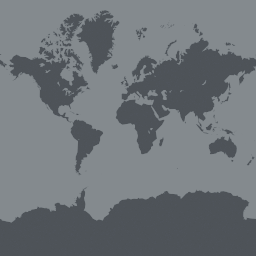The central goals of this project are to digitize all of Gabon's vertebrate collections and to create a software platform that leverages machine-learning algorithms to identify, store, and analyze a large dataset of camera-trap photos. All of these data will be made public on the Gabon Biodiversity portal and through GBIF.org.
Collections and records of Gabonese biodiversity are scattered across the country in several institutions:
- The collection at the National School of Water and Forests (ENEF): 2,000 fish and 200 reptile and mammal specimens
- The Institute for Agronomic and Forest Research (IRAF): 10,000 fish specimens.
- The Tropical Ecology Research Institute (IRET) has the oldest collection of fishes and amphibians.
- The Smithsonian collection in Gamba: 860 fish specimens, 900 herpetofauna, 280 mammals, 90 birds
- The National Parks Agency (ANPN) and international partners (Panthera, University of Stirling) manage an archive of several million photographs (estimated > 1 million occurrence records) of terrestrial mammals and birds from camera trap data.
These various collections are not all digitized and, in the case of camera trap data, are not labeled to the species level. These valuable data are, therefore, inaccessible to the scientific community. The need to work together and pool resources have led the above instituitions to form a partnership to create a national biodiversity database.
Over two years, the project team aims to digitize all vertebrate specimens across various collections (13,500 records), and to fully mobilize existing camera trap data (1 million records) to create a national database and publish it to GBIF. By investing BID funding in training local experts and developing open-source software, this project can have a lasting impact for decades beyond this project.
Project progress
A multilingual version of the Gabon Portal has been launched on 21 October 2021. The portal currently hosts >4,600 unique occurrence records, many with associated media files. Several partners on the project recently participated in the TDWG 2021 conference where a poster and a recorded video were presented and they helped in the process of translating TDWG standardized terms. Furthermore a translated guides about digitization, data management, and mobilization are now available online for free.
On the 22-26 November 2021 a technical workshop was hosted by the National School of Water and Forests (ENEF), with a focus on digitization, data management, and georeferencing data within the Gabon Symbiota Portal. Attended by 15 representatives from various institutions, the workshop provided information on:
• Digitization and GBIF overview (presented remotely by Dr Jean Ganglo from Benin)
• Establish a digitization workflows that allow various collections to digitize and publish the occurrence of specimens, images, etc.
• Learn about the digitization and biodiversity tools available on the Symbiota Gabon portal
• Importing data into the Gabon portal
• Data entry and management via the user interface
• Batch georeferencing of specimen records
• Data quality, data cleaning and mandatory fields occurrenceID GUID
• Publication of data to GBIF and iDigBio
On 7 December 2021, the first dataset was published from the Gabon Portal on GBIF. This dataset of amphibians includes 520 occurrence records, which increased the total number of amphibians on GBIF by 15%. Since the beginning of the project, 5,107 specimen-based occurrence records were digitized and mobilized. The project is working to georeference and link photographs to many specimens in the Gabon Portal before publishing them to GBIF.
To date, 4,870 specimens are digitized, which means that the project reached 36% of the final target by the midterm report.
The project successfully achieved its objectives and positively impacted the understanding of Gabon's biodiversity and the capacity of local researchers and successfully published 5,390 records on GBIF, greatly enhancing the global understanding of Gabon's biodiversity.
Post Project Activities
To maintain the momentum generated by the project, it is planned to conduct follow-up with virtual workshops, provide ongoing support to the Gabon Biodiversity Portal, work with institutions that have already mobilized their data to the portal to have them register their institutions to GBIF
so that they can begin publishing data there (example ANPN and USTM). All contributing institutions will be added to The Global Registry of Scientific Collections (GRSciColl).



